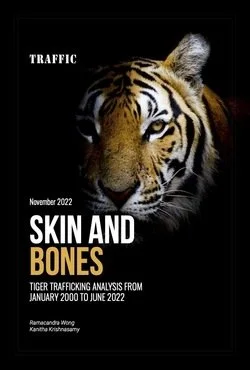By Ramacandra Wong, Kanitha Krishnasamy
Overall, whole tigers, dead and live, as well as a variety of tiger parts equal to a conservative estimate of 3,377 tigers were confiscated between January 2000 and June 2022 across 50 countries and territories, with data showing an increasing trend. According to Skin and Bones: Tiger Trafficking Analysis from January 2000–June 2022, the tigers and their parts were seized in 2,205 incidents, mostly in the 13 Tiger Range Countries (TRCs). India, home to more than half of the global wild tiger population, remains the top-ranked country with the most incidents and number of tigers confiscated. Data from the first half of 2022, the Year of the Tiger, stood out for several reasons: Indonesia, Thailand, and Russia recorded significant increases in the number of seizure incidents compared to the January-to-June period of the previous two decades. This recent period was also particularly significant for Indonesia, home to the Critically Endangered Sumatran Tiger. It has already seized more tigers in the first half of 2022 (18 tigers) compared to all confiscations in 2021 (totalling 16 tigers).
Selangor, Malaysia: TRAFFIC, Southeast Asia Regional Office, 2022. 52p.






